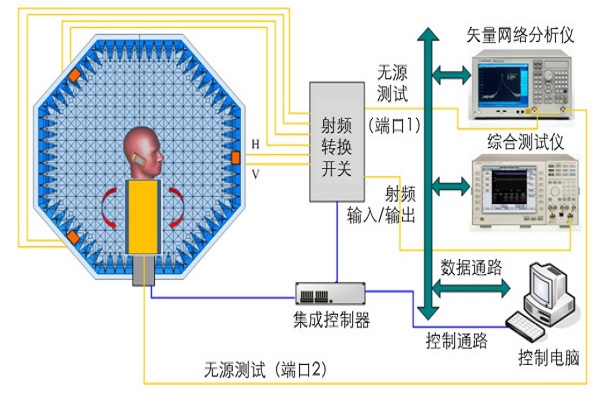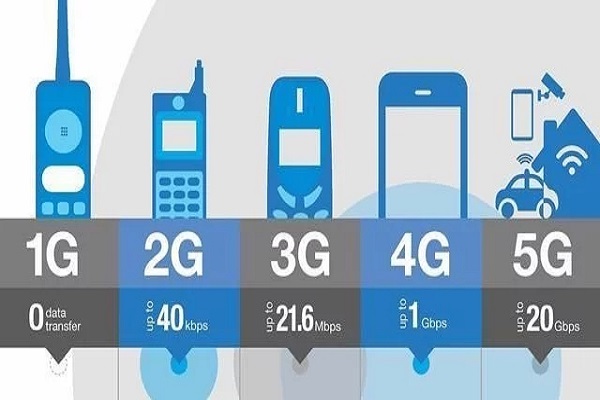
Service
Online Service
Contact Us

In August 2020, Guangdong Xingci Testing Technology Research Co., Ltd. completed the OTA 4G and 5G testing of an intelligent network monitoring device. details as follows:
The 4G LTE OTA test is carried out on the LTE FDD band 1.3.5.8 and LTE TDD band 34.38.39.40.41 frequency bands. The main testing equipment used is CMW500 and BLUETEST RTS65. The main test parameters are total radiated power (TRP) and total omnidirectional sensitivity ( TIS).
The 5G OTA test is conducted on the B3_n78, B3_n79, and B3_n41 frequency bands. Each frequency band tests three channels of high, medium and low. The main testing equipment used is Anritsu MT8000A and MT8821C. The main test parameters are total radiated power (TRP) and total omnidirectional sensitivity (TIS). ).

Our company has an OTA laboratory, which can meet the measurement of mobile phones, micro base stations, notebook computers, home gateways, smart homes, smart office terminals, data cards, personal smart terminals, smart car terminals and other equipment.
Test items include active tests: SISO/SIMO/MIMO total radiated power (TRP), total omnidirectional sensitivity (TIS), data throughput (TPUT), passive tests: antenna efficiency, diversity gain.
In the radio frequency performance test of terminal equipment, the test of the radiation performance of the whole machine has attracted more and more attention from all aspects. This radiation performance can reflect the final transmitting and receiving performance of the terminal. There are basically two ways to investigate the radiation performance of the terminal: one is passive testing, and the other is active testing.
Relatively speaking, passive testing focuses on investigating the terminal's radiation performance from the aspects of the antenna's radiation parameters such as the gain, efficiency, and pattern of the end antenna. Although the impact of the entire environment on the antenna performance is considered, the test data is not intuitive. On the other hand, the active test focuses on the radiation performance of the terminal from the aspects of the transmitting power and receiving sensitivity of the terminal. In a specific microwave anechoic room, test the transmitting power and receiving sensitivity of the whole machine in three-dimensional space, which can more directly reflect the radiation performance of the whole terminal machine.
1. high speed
This is the biggest feature of 5G. Compared with 4G networks, 5G networks have higher speeds, and the peak requirements for 5G base stations are not less than 20Gb/s. Of course, this speed is the peak speed. With the use of new technologies, this speed still has room for improvement.

2. the ubiquitous network
With the development of business, network business needs to be all-encompassing and widespread. Only in this way can we support richer services and can be used in complex scenarios;
(1). The ubiquitous network has two meanings. One is extensive coverage and the other is deep coverage. Extensive refers to the various places in our social life that require wide coverage. In the past, high mountains and valleys did not necessarily require network coverage. However, if 5G can be covered, a large number of sensors can be deployed to monitor the environment, air quality, and even landform changes and earthquakes. 5G can provide More such applications provide networks;
(2). Indepth refers to that in our lives, although there are already network deployments, we need to enter a higher-quality in-depth coverage. We already have a 4G network in our home today, but the quality of the bathroom in the home may not be good, and there is basically no signal in the underground parking garage. With the advent of 5G, the network will be covered widely and the above problems will be solved.
3. low power consumption
To support large scale IoT applications, 5G must have power consumption requirements. And 5G can reduce power consumption, allowing most IoT products to be charged once a week, or even once a month, which can greatly improve user experience and promote the rapid popularization of IoT products.
4. low latency
A new scenario of 5G is the highly reliable connection of unmanned driving and industrial automation. The minimum requirement of 5G for latency is 1 millisecond or even lower, which puts severe demands on the network. And 5G is an inevitable requirement for applications in these new fields; driverless cars require the central control center to be connected to the car, and the car should also be connected to each other. This requires the shortest delay to send information to the car. On, for braking and vehicle control reactions.
5. Internet of Everything
In the era of intelligence, in addition to Internet devices such as mobile phones and computers that need to use the Internet, more and more different types of devices such as smart home appliances, wearable devices, shared cars, and public facilities such as electric lights need to be connected to the Internet. Realize real-time management and intelligent related functions, and the interconnectivity of 5G also makes it possible for these devices to become smart devices.
Copyright 2020 Guangdong XingCiTest Technology Research Co., Ltd 粤ICP备20061947号
Friendship Links